A goodbye for Willoughby
For more than 60 years, the “Eiffel tower” has been a landmark of Willoughby City in the north of the Australian metropolis Sydney. The tower made history as one of the first transmission towers of the country.
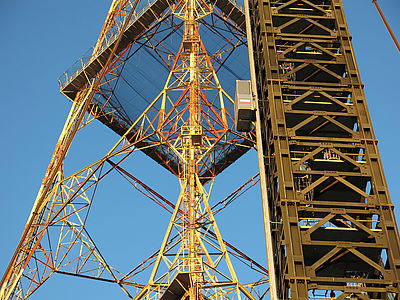
With a wistful look back at the old days, the removal of the TCN-9 Tower at Willoughby has been under way since May of this year. When the TCN-9 Studios completed the first transmission tower in the small town in 1956, it marked the start of the television era in Australia. This mast was replaced by the current, larger mast with a height of 233 metres almost ten years later, which still dominates the skyline of the Sydney suburb today.
The Australian property development group Mirvac bought the 3.2 hectare site with plans to build new residential units. This made it necessary to demolish the existing tower. This complex removal, which is expected to take nine months, was preceded by a very detailed planning phase involving multiple specialists and engineers. Marr Contracting was commissioned with the removal of the tower, which has the same height as a 77-story high-rise building. The internationally renowned company from the field of construction, supply of heavy-duty luffing tower cranes and complex crane work is a specialist in this field. Before the actual start of the removal work, steel cables had to be anchored in the bedrock to ensure sufficient stability for the required crane. Setting up this structure had already taken two months before the step-by-step demolition of the tower could even begin. This was followed by the actual installation of the free-standing, 200-metre high slewing tower crane. This crane will now start at the top, removing sections of the tower one by one and setting them down on the ground safely. Once half of the transmission mast has been dismantled, the jib will be changed for lifting the heavier sections of the lower part of the mast.
Marr Contracting, who have the overall responsibility for the project, place a special focus on safety during all their projects. The ascent and descent of the crane operator has to be a fast, safe and efficient process. Climbing up to the crane cab on access ladders through the tower segments is not only unproductive and arduous, but also extremely dangerous, especially in rain, wind and darkness. As this project uses a free-standing slewing tower crane, it is also not possible to ascend through an external structure. The Australian GEDA dealer and partner Hasemer Materials Handling had the right solution to hand straight away. The GEDA 2 PK crane operator hoist is the right product for quickly transporting crane operators on all slewing tower cranes. The hoist transports the crane operator to their workplace at dizzying height quickly and, above all, safely. This means no more risky, strenuous climbing in often poor weather conditions. The flexible system allows the hoist to be installed on free-standing cranes and on slewing tower cranes from any manufacturer. Comprehensive safety features complete the overall concept of the GEDA 2 PK: When opening the car, a small ramp with side protection folds down and provides safe access to the car in conjunction with the access barrier on the crane. A speed-dependent safety gear ensures safety, while electrical safety elements prevent operating errors. The crane operator hoist can also act as a life saver in emergency situations, as the recovery and rescue of unconscious or ill crane operators can be conducted very quickly with the GEDA 2 PK crane operator hoist. At a speed of 24 m/min, the vertical transport is distinctly faster and therefore more efficient than having the operator climb up on ladders. 60 metres, for example, can be covered in just over two minutes with the GEDA device – without it, it would take the crane operator about five times as long. The crane operator hoist was installed and completed by Hoist & Lift Tec. This is only one of the showcase projects of GEDA. Other orders worldwide involving the GEDA 2 PK and slewing tower cranes have been completed successfully in the past.
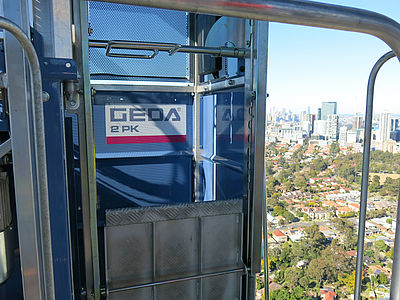
Once the transmission mast has been removed, Mirvac will start the next phase of the redevelopment and develop the site to implement its vision of creating an exemplary living community with high-quality design and state-of-the-art buildings. GEDA would also be the right contact for this construction phase. The market leader in the field of industrial and construction hoists offers hoist solutions that could make the construction phase much more efficient.
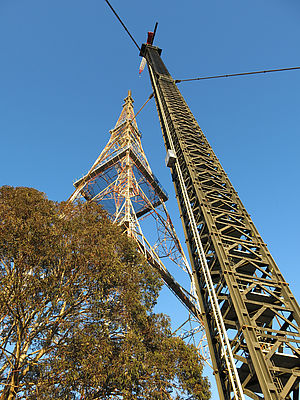
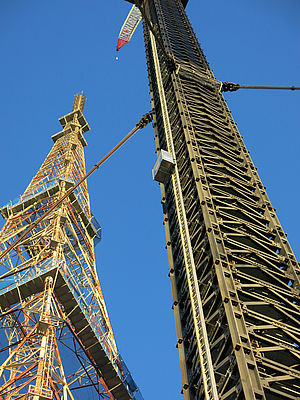
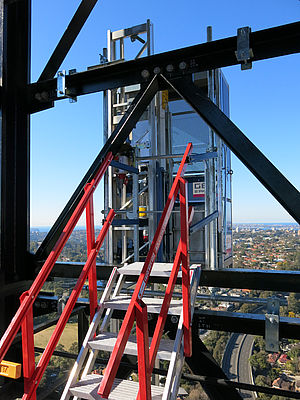




 Download as PDF
Download as PDF Print page
Print page